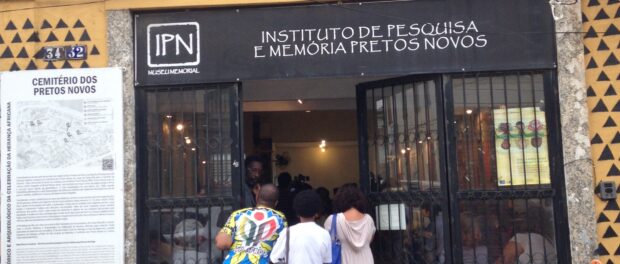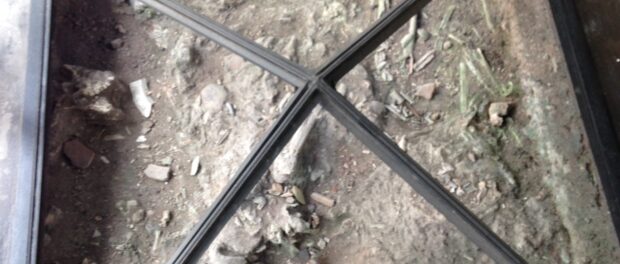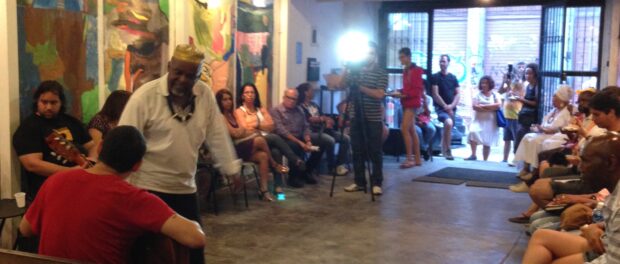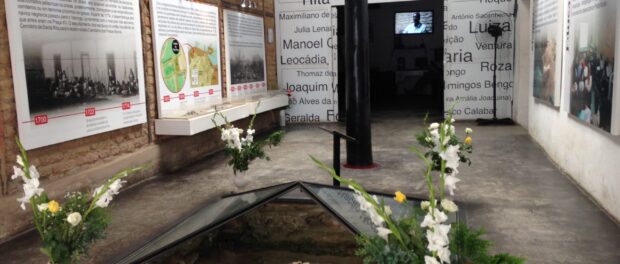
Rio’s Port Region has received a lot of attention in the years leading up to the Olympics with massive infrastructure projects such as the construction of a light rail system, numerous new glass-covered office buildings and the destruction of a portion of the Perimetral, a large highway that ran through the Port, in 2014. Cultural projects like the Rio Art Museum, the Museum of Tomorrow, and what will be the largest aquarium in Latin America called AquaRio are also popping up in the Port Region in efforts to revitalize this area of the city.
Less visible, however, are the Port Region’s deep, historic roots, for which its advocates continue working to gain attention and recognition. On January 16, the New Blacks Research Institute (IPN), also located in the Port Region, celebrated the 20th anniversary of the important discovery of a slave cemetery in the area.
In 1996, when the Guimarães family was renovating their house, workers discovered human remains located beneath the house. Upon further research, the house was confirmed to be located on top of what was called the New Blacks Cemetery, which refers to a large mass grave where remains were deposited of enslaved Africans who did not survive until sale, either dying on the journey from Africa to the New World or in Rio’s Port itself. The cemetery had been rumored to exist, and now it was found.
Officially, records state that 6,122 people were buried in the cemetery. But it is estimated that the remains of between 20,000 and 30,000 people were deposited there, most of whom were children or young adults. The Guimarães family is the only family to have dedicated their plot to historic preservation even though their entire city block covers the cemetery. A brutal reflection is inevitable upon visiting the site where no care was taken with the bodies, which were crushed or dismembered and burned along with trash.
The anniversary event represented a culmination of 20 years of research, activism and resistance to preserve the memory of this important piece of world history. The IPN uses its space to educate visitors about afro-Brazilian history and the history of the Cemetery of the New Blacks. Its programming includes tours, activist events and recently a number of art exhibitions showcasing local black artists.
Around 70-80 people filtered in and out of of the event on January 16 to pay their respects to the IPN and offer congratulations to the Guimarães family for their hard work. At 4pm attendees gathered around the memorials in the center of the building to offer prayers and memorials to the New Blacks. Afterwards, they gathered in the main hall for a roundtable discussion where activists, researchers, and others who have worked with the IPN commented on the importance of the Institute and the work they have done there. Dance, food and celebration followed the discussion as the event wound down in the evening.
Thawan Dias, an art student and native of Rio, attended the event to learn more about the Institute and its history.
“[I came] because I am black, to learn about the importance of this place that teaches about the history of my ancestors. When you get to know someone else, you begin to respect them. The function of the museum is to spread the message of black history in Brasil. Those who come will respect blacks. Then, we will begin to decrease the racism and inequality that exists. So, the museum has this final goal, to tell the tortured and violent facts that happened to our ancestors.”
The tone of the event was filled with emotion and passion. The Guimarães family told the story of how their life was changed with this discovery and the responsibility felt to tell the story of the space. Their daughter also explained how growing up in her home inspired her to study archaeology.
One attendee, Celia Santos, is a researcher at the IPN who said that the discovery of the New Blacks Cemetery is what prompted her to return to school. She is now writing her History thesis entitled “The Rest Recognized: Death was not the End” about the IPN and the New Blacks Cemetery.
“This is a place to learn the history of slavery in Brazil,” she said, telling how she was able to learn more about her own ancestors through her research at the IPN as well.
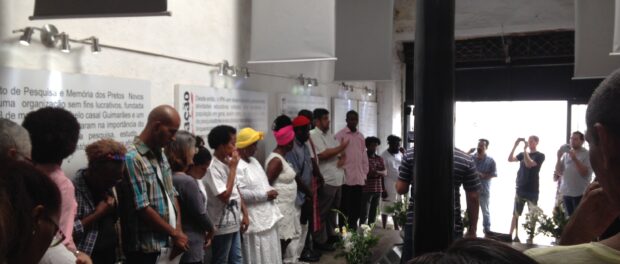
Alberto Gomes Silva, president of the Port’s redevelopment company CDURP, was also present. He acknowledged that there should be a greater effort to learn more about the history of the New Blacks Cemetery. He also talked about the importance of preserving the immaterial heritage of the site and working hard to be better citizens and stewards of history. Notably, there was no mention of how the CDURP will work with the IPN moving forward as the redevelopment of the Port Region continues.
Other community activists emphasized the critical importance of the IPN not just to Rio or Brazil, but to the entire world. Around 10 million Africans were enslaved and transported to the New World from Africa. Of those, 4 million came through Brazil and about 70%, or 2.4 million came through Rio alone. This makes Rio the largest slave port in all of human history and the importance of the New Blacks Cemetery is global. The speaker emphasized the importance of bringing more of these African heritage sites under protection like the Valongo slave market and Pedra do Sal quilombo and lauded recent efforts to apply for UNESCO World Heritage status.“Everyone needs to do more, to work harder, to make these stories heard,” voiced the speaker.
In the future, the IPN hopes to expand its programming of art exhibitions for local black artists and conduct more tours. Santos, who spends a lot of time at the museum for her research, hopes that the museum will become better known and groups from around the world will come see it to learn about the New Blacks. A number of speakers at the roundtable discussion also talked about the importance of the IPN in influencing policy discussions to preserve the memory of the place and the public discourse around Brazil’s turbulent past.
“This is not just about symbolic importance, it is about actual history and what happened here.”

